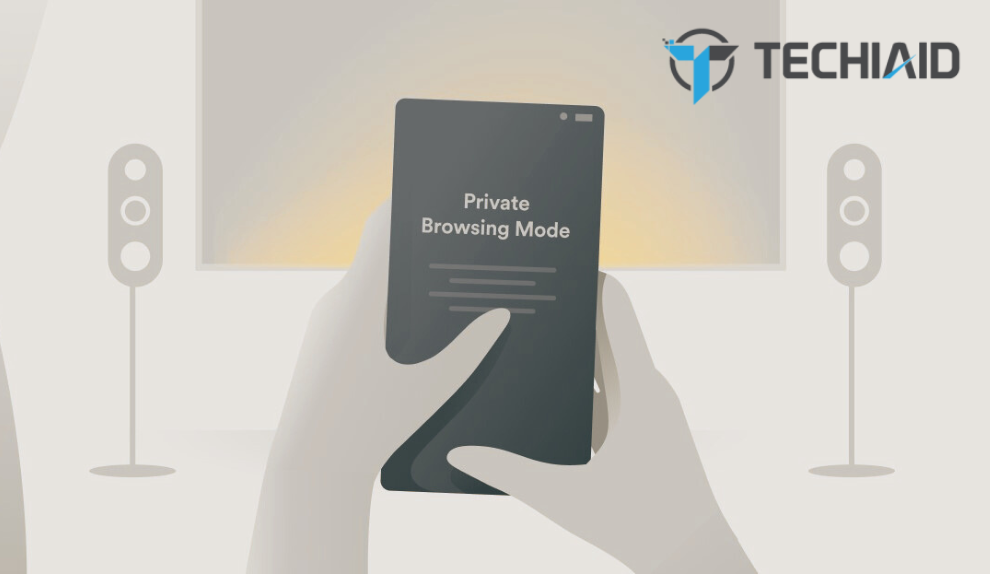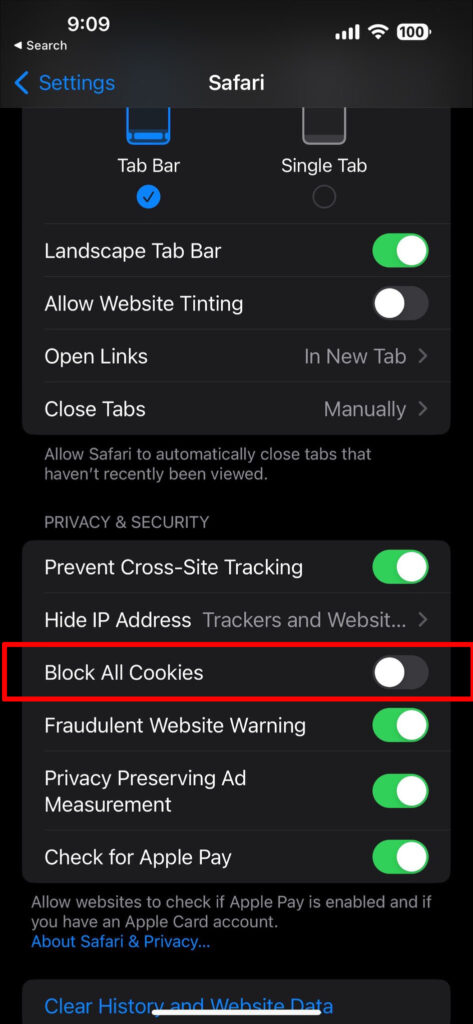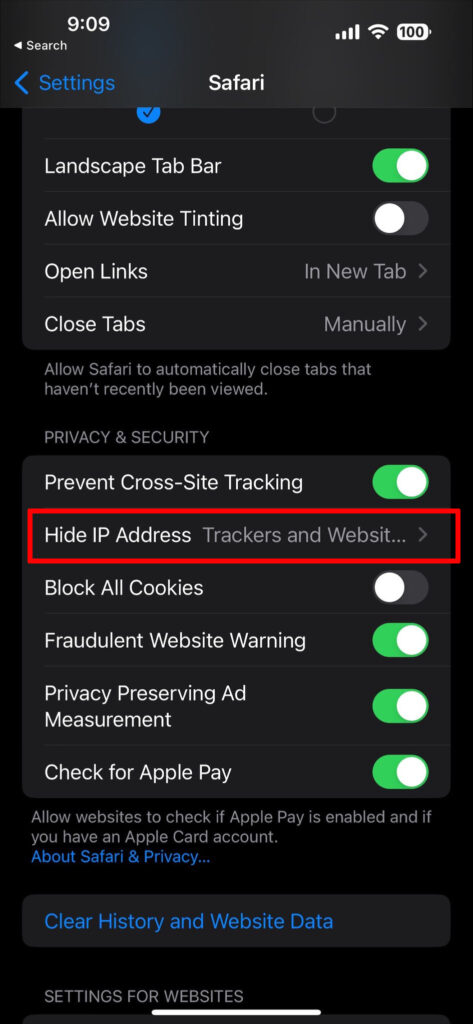Browsing the internet without keeping any records may sound like an awesome feat, but some websites and service providers can still trace your activity.
Still, with Apple offering industry-leading security features, you’d think it’s safer to browse on iPhone than on android. But are you truly anonymous while using your iPhone private browsing?
While many believe that private browsing offers complete anonymity, this is not necessarily the case with iPhones.
Private browsing can be traced on an iPhone. Although it blocks some degree of third-party tracking, your ISP, network administrator, or government can still monitor your online activities when browsing in private mode.
Let’s go over the details you should know about private browsing on your iPhone, how it’s traced, and what you can do to protect your privacy.
Contents
What Is Private Browsing on iPhone?
Private Browsing or Incognito is a privacy feature on browsers that lets you browse the web without keeping a record of the online activity.
When you enable private browsing on your iPhone, Safari stops storing your:
- Browsing history and search query data
- Site data
- Cookies from visited websites
- Information inputs in forms
- Cached files
Put simply, private browsing is just a way of preventing other users from seeing what you are up to. However, while this reduces the amount of data stored on your device, it does not entirely prevent tracking.
Is iPhone’s Private Browsing Actually Private?
As we’ve already mentioned – the answer is no. Although it does prevent your iPhone from storing certain information, like search history and passwords, it doesn’t guarantee complete privacy.
Moreover, its private browsing feature does very little to protect your data from the websites you visit or from third-party trackers. For instance, a website can still use IP addresses to track your location and device specifications and build detailed user profiles.
Similarly, your ISP, network administrator, government, or hackers can still observe, log, and analyze your activities while you’re browsing in private mode.
How Can Private Browsing Be Traced on iPhones?
If an entity like your ISP or government is indeed monitoring your browsing session, they can use a variety of methods to gain insight into your activities. Here’s an overview of the different tracking methods used to trace private browsing:

Network Traffic and Metadata
Trackers can monitor the size, length, and source of your website visits to uncover the general pattern of your web activity.
They can capture meta information like your device locations, specs, time stamps, and visited websites, which can then be used with traffic analysis to uncover more detailed information.
IP Addresses
IP addresses are like street addresses for devices. And as such, when browsing with an iPhone, your IP is visible on any website you visit.
When two devices connect over the internet, they must acknowledge each other. The internet world calls it “shaking hands.”
In simple terms, it means your device is communicating via the IP address to send the requested information where it’s destined. And as you can imagine, it has a lot to do with IP tracking..
Browser Fingerprint
Browser fingerprints are pieces of data that uniquely identify users based on their device and web browser. It’s somewhat more accurate than cookie-based tracking as it’s designed to track devices, not just the IP.
Trackers can leverage this type of information to identify and track their activities, even when private browsing is enabled.
Lack of Data Encryption
Private browsing does not encrypt your data, meaning any data transmitted while browsing can be intercepted by third parties like hackers or unauthorized users on the same network.
DNS Requests
Every time you access a website, your device must send a DNS request that contains your IP address. This request can be tracked and linked back to you, regardless of whether you’re using private browsing or not.
Website Use of Third-Party Trackers
Many websites and applications use third-party analytics and tracking tools such as Google Analytics, which can record user activities no matter what mode you’re browsing in.
While these tools keep a certain degree of anonymity, users aren’t completely invisible in that case either.
Malware and Extensions
Hackers often use malware and malicious extensions to track and monitor activities, even when using private browsing. These threats can go unnoticed on the device and cause data to leak without the user’s knowledge.
What to Do to Secure Your Browsing on an iPhone?
Private browsing is useful to some extent, but it’s essential to understand how and when it should be used to protect your privacy.
Want to learn how to improve security while browsing? Here are a few best practices you should keep in mind while using an Apple device:
Use a VPN
Using a virtual private network can shield your browsing activity from third-party trackers. VPNs also encrypt your data, making it harder for an ISP to read or monitor your activities.
Reputable VPNs like NordVPN provide extra features to further secure your browsing, such as strict no-logging policies, Tor-over-VPN, and military-grade encryption.
Disable Cookies
Your browser’s cookie settings can store information about your activities without your knowledge. While private browsing blocks cookies from websites you visit, it’s still possible to configure Safari in a way that disables all cookies altogether.
To do this, open your iPhone’s Settings app and scroll down to locate Safari. You’ll find the cookies option under the Privacy & Security section. Disable it from there.

Change AutoFill Settings
Safari’s autofill feature stores users’ information, like addresses, emails, contacts, even credit card numbers. It’s often enabled by default, so switching it off is best to shield your data from trackers.
To disable AutoFill on your iPhone, go to Settings >> Safari >> AutoFill and turn it off.

Hide Your IP Address
Similarly, you can hide your IP address from third-party trackers whenever you access a website. So, again go to Settings >> Safari >> Hide IP Address, and check From Trackers and Websites from the following option.

Use iCloud Private Relay
Apple announced a new iCloud Private Relay feature a couple of years ago. It provides additional security and anonymity while browsing online.
Using this paid security service, your traffic and IP address are sent through two internet relays. This ensures complete privacy and security while browsing.

Use Tor Network
The Tor Network is another valuable tool for anonymous browsing. It conceals your location and IP address by redirecting your traffic through servers worldwide.
By doing so, you prevent your identity from being tied to your online activities.
Tor officially does not have an app for iOS devices, so they recommend the Onion Browser instead. Although this browser does not offer complete anonymity like Tor, it’s better than nothing.
Stay Alert for Malware and Phishing
Staying vigilant while browsing online is always crucial. Many cyber threats are specifically designed to undermine your security when using private mode.
So, stay alert to phishing attacks and malware, and make sure your operating system and software are always up-to-date.
Frequently Asked Questions
If you’re still uncertain about your iPhone’s security while browsing in private mode, these answers to some of the most frequent online privacy questions should help.
Can I view my private browsing activities on my iPhone?
Yes, you can view your private browsing activities on an iPhone using a third-party app like MoniMaster.
However, we don’t recommend this as there’s no guarantee it won’t breach your privacy barrier and collect your data.
Is Safari’s private browsing enough to protect my browsing on my iPhone?
Private browsing in Safari, combined with some extra security measures, can provide adequate privacy and security while browsing the web on an Apple device.
However, VPN services can help you achieve absolute online security.
Does clearing browser history on iPhone prevent tracking?
No, it won’t. Your device constantly communicates with multiple external and internal sources, each of which can be used to track or monitor your activities.
Yet, to fend off malicious attacks, regular clearing of your browser’s history and cache files is recommended.
How does my employer track my iPhone’s private browsing?
Employers or websites that demand you to use tracking software can track your web activity even when you’re using private mode.
However, if you’re using a VPN, these trackers won’t be able to monitor your activities, as the VPN encrypts your data.
Conclusion
As you can see, private browsing on your iPhone isn’t foolproof, and those with the proper motivation and tools can still find you. However, it’s more likely to prevent casual snooping by non-tech-savvy individuals or companies.
To ensure data safety, using a combination of private browsing along with multiple security measures is your best bet. And we hope those outlined in this guide can help safeguard your personal information from the prying eyes.
Let’s not forget that Apple is continually developing new technologies to protect our online privacy. So, always keep yourself up to date with their latest releases to stay on top of your online security and anonymity.
